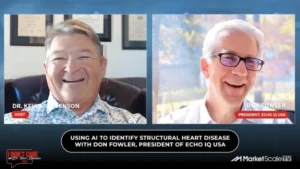How Online Learning Went Mainstream
The Growing Prevalence of Online Education
One out of three higher education students takes at least one course online. About one in six students enroll entirely in online courses to earn their degree remotely. This trend of increasing numbers of students choosing to learn online is expected to grow as the distance format of education is now considered normalized.
How Online Education Began
According to a Forbes report, before the internet existed, people received remote education through correspondence courses in the mail. As the mainstream became more comfortable with email and web interaction in the 1990s, most in the higher education industry saw online learning as a “fringe” program that modernized old-time correspondence mail courses.
However, around the year 2000, universities began to recognize that online education could operate more extensively and include the same tuition as traditional degrees. It was then that online education offerings began to increase rapidly.
How Far Online Education Has Come
Many institutes of higher education that have embraced online education are for-profit. Tuition and fees drive their model. Non-profit and public colleges and universities, in order to compete, are also offering online education options, but these are usually more traditional in structure than for-profit versions.
One of the key differences is that for-profit online education tends to be viewed as a product from a company, whereas non-profit or public education is viewed as a service offered by established, proven institutions. For-profit models have been struggling for years now, particularly since non-profits began regularly offering online options. Achievement gaps and low-graduation rates are some of the challenges that for-profit online programs face. Many for-profits now offer in-person options to compete with the benefits of traditional education.
Current statistics show that public and non-profit universities offer fewer exclusively distance-learning programs than for-profit institutions. However, public and non-profit programs have significantly higher enrollment totals of distance learners than for-profit counterparts. This shows a preference among learners for mixed-format options.
Mixed-Format Classrooms and Other Trends
Several of the most well-known for-profit institutions that once reigned in online education are now adapting to include physical locations. Meanwhile, the colleges and universities with the most thriving online programs are traditional, long-standing, and have physical locations. This emerging trend of students preferring mixed-format educational options is trickling down into K-12 level education too.
As Education Week reports, millions of K-12 students now take online classes. A small percentage of these students enroll in entirely online programs and never attend a physical school. The majority of students, though, enroll in supplemental online courses along with traditional learning formats. Some of these are hosted through for-profits, virtual school programs, or colleges offering advanced placement options.
Many supplemental online options are infiltrating traditional public schools, where students may complete self-paced supplemental courses. In the state of Indiana, for example, public elementary schools can build “e-learning” days into their curriculum. On these days, students use digital resources to continue their learning away from their physical school location.
As these young students who are immersed in both in-person and online learning grow to become college students, experts will be watching for the effects on both for-profit and non-profit or public universities course formats and offerings.








